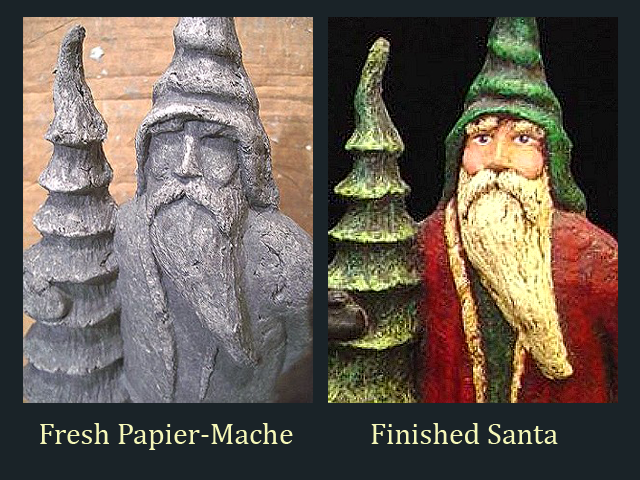HISTORICAL PAPIER-MACHE
by Randy Thompson, maker of Folkheart Santas.
The origins of paper/papier-mache DO NOT include strips of newspaper glued onto a balloon.
It was used in ancient times by the Chinese and Tibetans, but really gained widespread use between 1720 and 1900. The basic mixture was paper pulp, water and glue. This papier-mache (French for ``chewed paper``) mixture was formed around objects and pressed into molds to make mostly decorative items like tea trays, boxes, figurines and such. Later, a process was perfected to steam pieces of paper board to soften it and, using hydraulic presses, form it into metal molds under high pressure. The pieces were cast as a thin half-shell pieces which were then glued together to make a hollow papier-mache piece. They even manufactured furniture out of papier-mache and one man invented a way to make strong paper wall boards for building walls.

MY PAPIER-MACHE
My papier-mache mixture is made from newspapers, shredded into wet pulp, with glue added. I almost never add anything to my recipe, but it has happened.
I use my papier mixture to hand-sculpt some figures, and, sometimes, I press it into my handmade molds. For the most part, my figurines are not hollow, though I have made some larger pieces hollow, which is a tedious task. I do not have the big machinery to make hollow pieces. My pieces are mostly solid papier-mache pulp.
